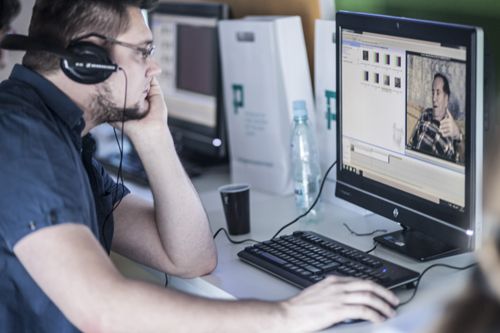Spotlight on Poland

USC Shoah Foundation’s work in Poland has come a long way since filming of founder Steven Spielberg’s Schindler’s List began in Krakow in 1993. Today, it is an important site for USC Shoah Foundation's testimony-based educational programs and resources.
The Visual History Archive contains 1,372 interviews of Holocaust survivors and witnesses recorded in Poland and 1,502 conducted in the Polish language. In Warsaw, both the Museum of the History of the Polish Jews and the History Meeting House at the Municipal Institution of Culture have full access to the Visual History Archive, since 2013 and 2011, respectively. Nine other institutions have partial access to the Visual History Archive.
Earlier this month, Poland hosted its second Teaching with Testimony in the 21st Century program – USC Shoah Foundation’s flagship professional development initiative. It is a two-year program that incorporates workshops, mentoring, and community building to prepare educators to search for and utilize testimony in the Visual History Archive and digital learning tools such as the Institute’s online education website IWitness. Participants, who are selected from applicants nationwide, engage deeply in the theory and practice of using testimony to achieve significant student learning.
The six-day initial training session was held at the Museum of the History of the Polish Jews (MHPJ), whose education department includes USC Shoah Foundation’s liaison in Poland, Monika Koszyńska. One participant said after the training, “Now I will always remember that every sentence used by the witness has so many layers and it is so important to explain them to our students.”
When the museum’s main exhibit officially opens in October 2014, MHPJ’s educational programming will incorporate testimony from the Visual History Archive, Koszyńska said.
USC Shoah Foundation’s website has a Polish-language portal featuring news and resources. Its new video exhibit about the Polish town of Oświęcim, Born in the City that Became Auschwitz, has been translated into 10 languages.
USC Shoah Foundation has produced several Polish-language educational resources, including Droga do ludobójstwa – sytuacja Żydów w latach 1939-1941 (The Road to Genocide: The Situation of Jews in the Years 1939-1941) for use in Auschwitz State Museum’s educational product; Ludzie i wojna: początek drugiej wojny światowej w relacjach świadków wydarzeń (People and War: Beginning of WWII in the Accounts of Eyewitnesses); and W obliczu Zagùady: Ratujàcy, bierni świadkowie, sprawcy i ich pomocnicy (Facing the Holocaust: Rescuers, Bystanders, Perpetrators, and Collaborators).
Part of USC Shoah Foundation’s Broken Silence documentary series, the 2002 Polish-language documentary Pamiętam (I Remember) is about four Holocaust survivors who were either helped or betrayed by their Polish neighbors. The film was directed by Academy Award-nominee Andrzej Wajda.
Click here to learn about USC Shoah Foundation's work in Czech Republic.